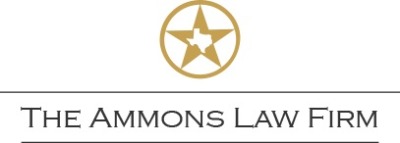Vehicle Rollover Risks and Manufacturing Defect Claims
Rollover crashes represent less than three percent of all traffic accidents yet account for approximately thirty percent of passenger vehicle occupant fatalities. SUVs, pickup trucks, and commercial vans face elevated rollover risk due to their elevated center of gravity and weight distribution characteristics. When these vehicles overturn, occupants frequently suffer severe injuries or death due to compromised structural integrity, inadequate restraint systems, or failed electronic stability controls.
Civil product liability litigation examines whether manufacturers incorporated available safety technologies and engineering solutions during the vehicle design process. A qualified Vehicle Rollover Attorney investigates crash dynamics, evaluates engineering decisions, and identifies alternative designs that could have prevented or minimized injuries. These cases often reveal that automakers possessed knowledge of rollover hazards but failed to implement reasonable protective measures.
Federal Motor Vehicle Safety Standards establish minimum requirements for vehicle construction and performance. However, these regulations do not shield manufacturers from liability when safer, feasible design alternatives existed at the time of production. Courts analyze whether roof crush resistance met industry standards, whether seat anchorage systems performed adequately, and whether side curtain airbags deployed properly during the rollover sequence. Establishing causation between the design defect and resulting injuries requires extensive technical analysis and expert testimony from automotive engineers and accident reconstruction professionals.
Crashworthiness Requirements and Occupant Protection Standards
The crashworthiness doctrine requires that vehicles provide reasonable protection during foreseeable accident scenarios, including rollover events. Occupants commonly sustain spinal cord injuries, traumatic brain injuries, internal organ damage, and severe orthopedic trauma when vehicle systems fail during rollover crashes. Door latches may release unexpectedly, allowing occupant ejection. Seats can detach from floor mountings, causing secondary impact injuries. Roof structures may collapse beyond acceptable limits, crushing occupants inside the passenger compartment.
Vehicle Rollover Lawyers must demonstrate that specific injuries resulted directly from post-crash system failures rather than the initial impact forces. This analysis requires detailed medical documentation, biomechanical engineering analysis, and accident reconstruction to establish the causal relationship between defective components and resulting harm. Cases often involve complex questions about injury mechanisms, occupant kinematics, and the performance of individual safety systems during the rollover sequence.
Component failures during rollover events include insufficient roof pillar strength, improper airbag deployment timing, and door latch mechanisms that fail under rollover loading conditions. Window glazing may shatter inappropriately, creating ejection pathways that lead to fatal injuries. Restraint system geometry can position occupants incorrectly, increasing contact with intruding roof structures or ejected components. A Rollover Accident Lawyer coordinates with biomechanical engineers, materials scientists, and medical professionals to quantify how design deficiencies contributed to the severity of injuries sustained.
Documentation preservation becomes critical in these cases, as physical evidence deteriorates rapidly after the accident. Photographs, measurements, and component testing must occur promptly to establish the failure modes and performance characteristics of safety systems. These technical findings support broader Personal Injury Cases by demonstrating manufacturer negligence and design inadequacy.
Engineering Evidence and Manufacturer Responsibility
Product liability claims against vehicle manufacturers require proof that alternative designs were technologically and economically feasible when the vehicle was produced. Rollover Accident Attorneys must coordinate multiple engineering disciplines to analyze vehicle design, component performance, and available safety technologies. Event data recorders provide crucial information about vehicle speed, steering inputs, brake application, and electronic system responses in the moments preceding the rollover.
Materials testing reveals whether roof structures, door frames, and seat components met design specifications and industry standards. Manufacturing processes, quality control procedures, and cost analysis documents often demonstrate that automakers made conscious decisions to prioritize production costs over occupant safety. When manufacturers implement enhanced safety features in vehicles sold internationally but exclude these same technologies from domestic models, liability arguments become substantially stronger.
Corporate decision making documents, internal communications, and engineering reports frequently reveal that manufacturers understood rollover risks but chose not to implement available countermeasures. Safety testing data, regulatory submissions, and warranty claim patterns provide additional evidence of manufacturer knowledge regarding design deficiencies. Personal Injury Attorneys in Houston utilize this documentary evidence to demonstrate that manufacturers failed to exercise reasonable care in protecting consumers from foreseeable harm.
Digital forensics and electronic system analysis reveal how onboard computers, stability control systems, and airbag controllers performed during the rollover event. Software programming, sensor calibration, and system integration decisions can significantly impact occupant safety outcomes. Expert analysis of these electronic systems often reveals design compromises that increased injury risk without providing corresponding benefits to vehicle performance or manufacturing efficiency.
Multi-Party Liability and Complex Litigation Management
Vehicle rollover injury claims frequently involve multiple defendants, including vehicle manufacturers, component suppliers, tire companies, and aftermarket modification providers. Tire defects, including tread separation and sidewall failures, commonly trigger rollover accidents in SUVs and light trucks. When tire failures initiate the rollover sequence, both tire manufacturers and vehicle designers may share responsibility for resulting injuries.
Component manufacturers supply critical safety equipment including airbags, seat belts, door latches, and electronic stability systems. Design defects or manufacturing flaws in these components can significantly increase injury severity during rollover events. Aftermarket modifications that alter vehicle height, weight distribution, or suspension characteristics can affect rollover propensity and may shift liability to installation companies or equipment manufacturers.
Personal Injury Lawyers must preserve physical evidence immediately following the accident, including vehicle inspection, component testing, and electronic data extraction. Insurance coverage disputes often arise when multiple parties share liability, requiring careful coordination between different carriers and policy provisions. Expert witness testimony must address the interaction between different vehicle systems and how multiple component failures contributed to the overall injury pattern.
Coordination with Legal Help for Emotional Distress becomes important when family members witness severe rollover injuries or when survivors experience lasting psychological trauma related to the accident. These psychological injuries require separate medical evaluation and may involve different expert witnesses and damage calculations.
Medical Documentation and Comprehensive Injury Assessment
Rollover accidents produce some of the most severe injuries encountered in motor vehicle litigation. Spinal cord damage can result in permanent paralysis, requiring lifetime medical care and extensive home modifications. Traumatic brain injuries may cause cognitive impairment, personality changes, and reduced life expectancy. Multiple orthopedic fractures often require repeated surgical procedures and extended rehabilitation periods.
Life care planners work with treating physicians to project future medical needs, including surgical procedures, medication costs, assistive equipment, and nursing care requirements. Vocational rehabilitation experts assess lost earning capacity and career limitations resulting from permanent disabilities. Home modification specialists evaluate accessibility needs and estimate costs for wheelchair ramps, bathroom modifications, and adaptive technology installations.
Personal Injury Law Firms coordinate comprehensive medical teams to document both immediate and long term consequences of rollover injuries. Neuropsychological testing reveals cognitive deficits that may not become apparent until months after the accident. Physical therapy evaluations establish functional limitations and rehabilitation potential. Pain management physicians document chronic conditions that will require ongoing treatment throughout the victim's lifetime.
Psychological injuries accompanying severe physical trauma require careful documentation and expert evaluation. Depression, anxiety disorders, and post-traumatic stress frequently develop following catastrophic rollover accidents. These conditions can significantly impact quality of life and may qualify for additional compensation through Legal Help for Emotional Distress claims. Mental health professionals must establish the causal relationship between the accident and subsequent psychological symptoms to support damage calculations.
Each Personal Injury Case requires detailed medical evidence linking the rollover accident to specific injuries and demonstrating how design defects contributed to the severity of harm suffered. This medical foundation supports both liability arguments against manufacturers and damage calculations for future care needs.
Civil Remedies and Public Safety Impact
Successful product liability litigation against vehicle manufacturers serves multiple important functions beyond individual victim compensation. Substantial verdicts and settlements create financial incentives for manufacturers to prioritize safety in future vehicle designs. Discovery proceedings in rollover litigation often reveal internal corporate documents that expose widespread safety problems and influence regulatory oversight.
These cases frequently result in vehicle recalls, design modifications, and industry wide safety improvements that protect future consumers. Court proceedings provide public transparency regarding manufacturer decision making processes and safety priorities. When manufacturers face significant financial consequences for design defects, other companies in the industry take notice and often implement proactive safety measures to avoid similar liability exposure.
Trial outcomes establish legal precedents that strengthen future cases and clarify manufacturer responsibilities under product liability law. Successful rollover litigation demonstrates that cost considerations cannot justify compromising occupant safety when feasible design alternatives exist. Personal Injury Law Firms with proven experience in automotive defect cases leverage technical expertise, medical knowledge, and legal precedent to achieve favorable outcomes for seriously injured clients.
The civil justice system provides the primary mechanism for holding manufacturers accountable when regulatory oversight proves insufficient. Private litigation fills gaps in government safety standards and creates market pressures that encourage continuous safety improvements. Victims of rollover accidents and their families deserve both full compensation for their losses and assurance that similar tragedies will be prevented through improved vehicle design and manufacturing practices.
This content is for informational purposes only and does not constitute legal advice. No attorney-client relationship is formed by reading this article. Laws may vary by jurisdiction. Please consult a qualified attorney licensed in your state for legal guidance specific to your situation.















